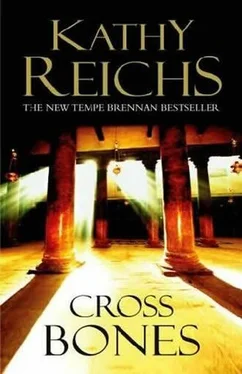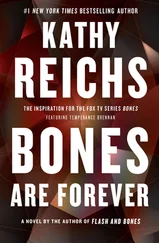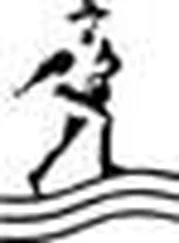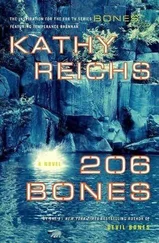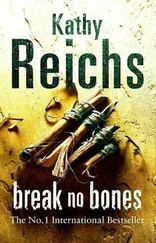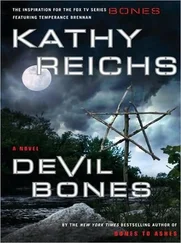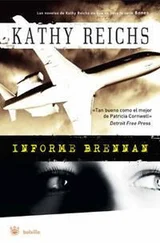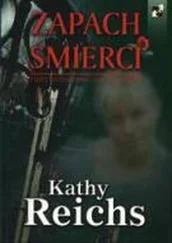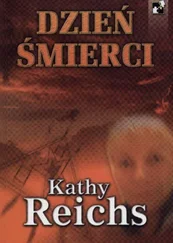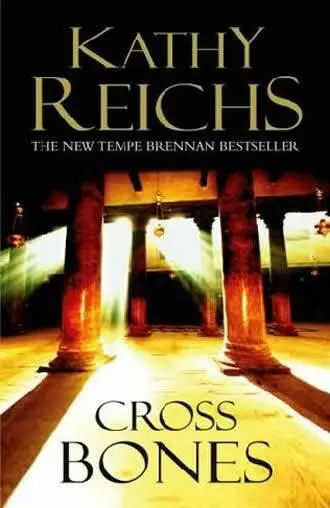
The eighth book in the Temperance Brennan series, 2005
As usual, I am deeply indebted to many of my colleagues, family, and friends for their time, expertise, and advice.
Dr. James Tabor, Chair, Department of Religious Studies, University of North Carolina at Charlotte, lit the initial spark forCross Bones, shared his personal notes and research findings, checked a thousand fine points, and gallantly squired me around Israel.
Dr. Charles Greenblatt and Kim Vernon, Science and Antiquity Group, The Hebrew University of Jerusalem, and Dr. Carney Matheson, Paleo-DNA Laboratory, Lakehead University, coached me on ancient DNA. Dr. Mark Leney, DNA Coordinator, CILHI, Joint POW-MIA Accounting Command, and Dr. David Sweet, Director, Bureau of Forensic Dentistry, University of British Columbia, answered questions about modern DNA.
Azriel Gorsky, Head (Emeritus), Fibers and Polymers Laboratory, Division of Identification and Forensic Science, Israel National Police, gave advice on hair and fiber analysis, and on the workings of Israeli law enforcement.
Dr. Elazor Zadok, Brigadier General, Director, Division of Identification and Forensic Science, Israel National Police, allowed a tour of their Forensic Science facility. Dr. Tzipi Kahana, Chief Inspector, Forensic Anthropologist, Division of Identification and Forensic Science, Israel National Police, familiarized me with the Israeli medical examiner system.
Dr. Shimon Gibson, Jerusalem Archaeological Field Unit, took me to sites throughout Israel, and answered many questions about his homeland.
Debbie Sklar, Israel Antiquities Authority, provided a private tour of the Rockefeller Museum.
Officer Christopher Dozier, Charlotte-Mecklenburg Police Department, and Sergent-détective Stephen Rudman, Superviseur, Analyse et Liaison, Communauté Urbaine de Montréal Police (retired), supplied information on obtaining phone records.
Roz Lippel helped keep the Hebrew honest. Marie-Eve Provost did the same for the French.
Special thanks go to Paul Reichs for his insightful comments on the manuscript.
Credit must be given to two books mentioned in the text: Masada: Herod’s Fortress and the Zealots’ Last Stand by Yigael Yadin, George Weidenfeld amp; Nicolson Limited, 1966; The Jesus Scroll by Donovan Joyce, Dial Press, 1973.
Last, but far from least, heartfelt thanks to my editor, Nan Graham. Her advice madeCross Bones a far better book. Thanks also to my editor across the pond, Susan Sandon.
And, of course, to Jennifer Rudolph Walsh, Co-Head of the Worldwide Literary Department, Executive Vice President, and one of the first two women appointed to the Board of Directors of the William Morris Agency. Way to go, girl! Thanks for hanging in as my agent.
For Susanne Kirk, editor, Scribner, 1975-2004
and
For Dr. James Woodward, chancellor,
University of North Carolina at Charlotte, 1989-2005
Thanks for the years of support and encouragement.
Enjoy your retirements!
Depart from evil, and do good. Seek peace, and pursue it.
– Jewish Holy Scripture,
Psalm 34:14
The fruit of righteousness is sown in peace for them that make peace.
– New Testament, James 3:18
And make not Allah because of your swearing (by him) an obstacle to your doing good and guarding (against evil) and making peace between men, and Allah is Hearing, Knowing.
– Koran 2:224
• From 1963 to 1965, Masada, site of a first-century Jewish revolt against the Romans, was excavated by Israeli archaeologist Yigael Yadin and a team of international volunteers. Yadin’s workers recovered the fragmentary and commingled remains of approximately twenty-five skeletons from a cave complex, designated Loci 2001/2002, located below the casement wall at the southern tip of the summit. Unlike other human remains found within the main complex of ruins at the northern end of Masada, these bones were not immediately reported to the press.
In the 1990s, a photo surfaced of a single intact skeleton that was also recovered from Loci 2001/2002 during the 1963 to 1965 excavation. That skeleton was never mentioned or described by the project’s physical anthropologist, Nicu Haas. It was not discussed by Yadin in his published reports or interviews.
* Formal field notes were not kept during the Masada excavation, but oral briefings took place regularly between Yadin and his staff. Transcripts of these sessions are archived at the Mount Scopus Campus of Hebrew University. Pages covering the period of the discovery and clearing of Loci 2001/2002 are missing.
* Neither the bones from the twenty-five commingled individuals, nor the articulated skeleton, nor the contents of Loci 2001/2002, are described in the six volumes of the final Masada excavation publication.
* Though Nicu Haas was in possession of the bones for more than five years, he published nothing on the commingled individuals or on the complete skeleton recovered at Loci 2001/2002. Haas’s handwritten notes, including a full bone inventory, indicate he never received the complete skeleton.
* In the late 1960s, Yigael Yadin stated in press interviews that carbon-14 dating was seldom done, and that it was not his job to initiate such tests. The journalRadiocarbon indicates that Yadin sent samples for carbon-14 dating from other Israeli excavations during that period. Despite uncertainty concerning the age of the Loci 2001/2002 remains, Yadin never sent samples for radiocarbon dating.
• In 1968, the skeletal remains of a “crucified man” were found during road construction north of the Old City of Jerusalem. The deceased, Yehochanan, died at approximately twenty-five years of age, during the first century. A nail and wood fragments were embedded in one of Yehochanan’s heel bones.
• In 1973, Australian journalist Donovan Joyce publishedThe Jesus Scroll (Dial Press). Joyce claimed to have visited Israel, met a volunteer from Yadin’s excavation team, and seen a stolen first-century scroll from Masada containing the last will and testament of “Jesus, son of James.” According to Joyce, the scroll was smuggled out of Israel, presumably to the USSR.
• In 1980, roadworkers uncovered a tomb in Talpiot, just south of the Old City of Jerusalem. The tomb contained ossuaries inscribed with the names Mara (Mary), Yehuda, son of Yeshua (Jude, son of Jesus), Matya (Matthew), Yeshua, son of Yehosef (Jesus, son of Joseph), Yose (Joseph), and Marya (Mary). The coexistence of the names in one tomb is rare. Skeletal materials have been submitted for DNA testing.
• In 2000, American archaeologist James Tabor and his team discovered a freshly robbed tomb in the Hinnom Valley, outside Jerusalem. The tomb contained twenty ossuaries, all but one shattered. The lower chamber held a burial shroud wrapping a fragmentary human skeleton and hair. Carbon-14 testing showed the shroud was first-century in age. Microscopic examination revealed the hair was clean and vermin-free, indicating the deceased had been of high status. Anthropological analysis determined the remains were those of an adult male. DNA sequencing demonstrated a familial relationship among most of the other individuals buried in the tomb.
• In 2002, Israeli antiquities collector Oded Golan revealed the existence of a first-century ossuary inscribed “James, son of Joseph, brother of Jesus.” That fall, the ossuary was made public. While experts agree that the small stone coffin is first-century in age, controversy surrounds the authenticity of the inscription. Circumstantial evidence suggests the ossuary came from the vicinity of the Hinnom, possibly from Tabor’s “shroud” tomb.
Читать дальше
